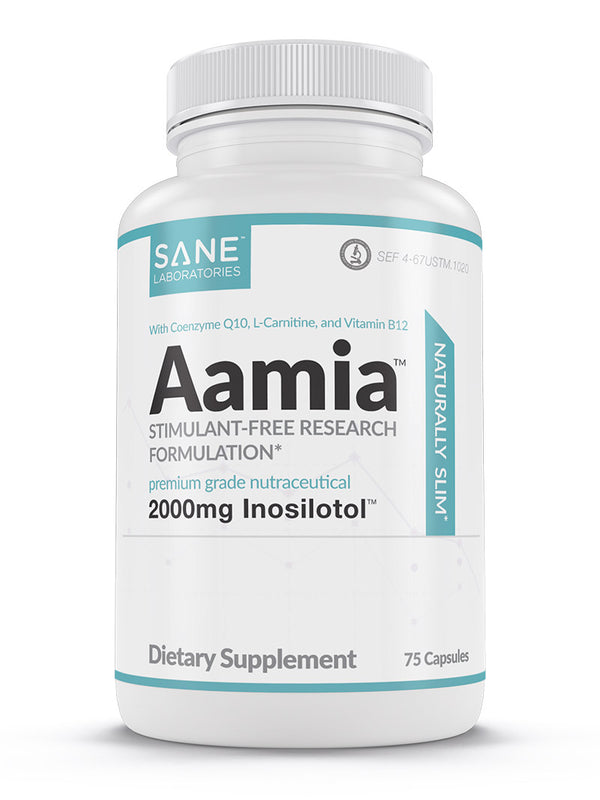If you’ve ever experienced a chronic cough that lasts more than 8 weeks and excessive phlegm production, you’re not alone. These two medical problems affect millions of people worldwide.
Clinical cough, which refers to coughs with underlying neurophysiological mechanisms, is important for understanding the persistent nature and management of chronic cough conditions.
Discover the benefits of SANE Vitaae for brain health Click here to learn about about Vitaae™ and to place your order now while supplies last!
Many underlying conditions, such as asthma, chronic bronchitis, gastroesophageal reflux disease (GERD), or even more serious conditions like chronic obstructive pulmonary disease (COPD), can cause these symptoms. Chronic idiopathic cough is another type of chronic cough that occurs without an identifiable cause and is often linked to neural hypersensitivity. Developing treatments and improving outcomes requires understanding the biology behind these symptoms.
The clinical presentation of chronic cough often reflects underlying neuroinflammatory and sensory hypersensitivity mechanisms, which are crucial for accurate diagnosis and understanding disease pathology.
At the heart of this biology is the nervous system, specifically glial cells. Glial cells, often overshadowed by the more well-known neurons or nerve cells, are a vital part of the nervous system. They support and protect neurons, maintain homeostasis, form myelin, and participate in signal transmission in the nervous system. The airway wall is a key anatomical site where airway nerves and sensory neurons are located, playing a central role in cough reflex pathways. Airway nerves are heterogeneous in both expression and function.
Without glial cells, neurons wouldn’t be able to perform their jobs well. But they can also cause health issues. Recent research has shown their key role in inflammatory and neuroimmune responses, which, when not sufficiently regulated, may cause neuroinflammation, leading to many chronic conditions.
By looking at the role of glial cells in chronic cough and phlegm production, we can gain new insights into how these cells contribute to respiratory disease pathology. This could lead to new therapies targeting glial cells and relief for those with chronic respiratory symptoms. Targeting neuroinflammation driven by glial cells represents a potential new therapeutic strategy for chronic cough, analogous to approaches in chronic pain.
Introduction to Chronic Cough
Chronic cough is a persistent and often frustrating clinical problem that affects millions of people around the globe. Defined as a cough lasting more than 8 weeks, it can significantly disrupt daily life, sleep, and overall well-being. While chronic cough may sometimes result from simple respiratory infections, it is frequently associated with more complex conditions such as chronic obstructive pulmonary disease (COPD) or asthma. Chronic cough is a common feature in over 100 distinct diseases, many of which are characterized by the influx of inflammatory cells into airways. The mechanisms underlying chronic cough are multifaceted, involving not only inflammation and irritation of the airways but also heightened activity and sensitivity within neural pathways that control the cough reflex. These neural pathways can be influenced by a variety of triggers, including respiratory infections, environmental irritants, and chronic inflammation. Understanding the intricate mechanisms underlying chronic cough is essential for developing more effective treatments, as this condition often proves challenging to manage with standard therapies.
What are Glial Cells?
Glial cells, also known as neuroglia, are non-neuronal cells in the central nervous system (CNS). Their main function is to support and protect neurons. Glial cells exist and are necessary for homeostasis, myelin production, and signal transmission. The diverse glial cells function to provide physical support, nutrients, and protection to neurons. They also regulate extracellular fluid and guide neuronal migration during embryonic development.
-
Astrocytes: Astrocytes are star-shaped glial cells that are the most common in the CNS. They support neurons by maintaining the blood-brain barrier, regulating blood flow, and providing nutrients. Astrocytes also help repair the brain and spinal cord after traumatic injury.
-
Microglia: Microglia are the resident immune cells of the CNS. They are the first line of active immune defense in the brain and spinal cord. Microglia constantly scan the CNS for signs of infection or damage and clear dead cells and debris.
-
Oligodendrocytes: Oligodendrocytes form myelin sheaths around axons in the CNS. Myelin sheaths are necessary for rapid signal transmission along neurons. Each oligodendrocyte can myelinate multiple axons and provide support and insulation for efficient signal conduction.
-
Ependymal Cells: Ependymal cells are located along the ventricles of the brain and the central canal of the spinal cord. Their main function is to produce and distribute cerebrospinal fluid (CSF), which protects the brain and spinal cord, removes waste, and maintains a constant chemical environment.
-
Schwann cells: Schwann cells play a crucial role in the peripheral nervous system. They help keep nerve fibers healthy by creating a protective covering called the myelin sheath, which acts like insulation and helps signals travel quickly. They also help fix and regenerate damaged nerves.
General Functions of Glial Cells in the CNS
Glial cells and neurons work together to perform many functions that are important for brain health and CNS function. Glial cells provide structural support, maintain the extracellular environment, modulate synaptic activity, and participate in immune responses.
Glial cells also play a key role in repairing and scarring the brain and spinal cord after injury.
Glial Cells vs Neurons
Neurons are the cells that transmit electrical signals in the nervous system, but glial cells are the supporting but equally important cells.
Glial cells don't conduct electrical impulses. They support neurons to function correctly by providing structural support, nutrients and protection.
Neurons rely on glial cells to maintain their environment, so these two cells are partners in the CNS.
Glial Cells and Neuroinflammation
Neuroinflammation, or inflammation of the nervous tissue, is a defense mechanism triggered by various factors, such as infections, traumatic brain injury, toxic metabolites, or autoimmune diseases.
Acute neuroinflammation can be protective, but chronic neuroinflammation is often associated with neurodegenerative diseases such as Alzheimer’s, Parkinson’s, and multiple sclerosis. Chronic inflammation in the nervous system can cause neuronal damage and loss of function and contribute to the progression of these diseases.
Glial cells, especially astrocytes and microglia, are key in initiating and regulating neuroinflammation. These resident immune cells in the CNS play crucial roles in maintaining the health and functionality of the neural environment. Microglia constantly scan the environment for signs of injury or infection. Upon detecting a threat, they become activated and release pro-inflammatory cytokines and chemokines to recruit more immune cells and orchestrate the inflammatory response. Among these cytokines, tumor necrosis factor alpha (TNF-α) is a key inflammatory mediator involved in neuroinflammatory processes and can significantly impact neural function.
Astrocytes and microglia are also involved in cleaning up dead neurons, further contributing to the maintenance of a healthy neural environment. In addition to their clean-up role, astrocytes release inflammatory mediators when the CNS is injured or diseased. They help modulate the inflammatory response by maintaining the blood-brain barrier and regulating the entry of inflammatory cells and molecules into the CNS.
While this response is important for acute damage, prolonged activation of microglia can cause chronic inflammation and neuronal damage. Similarly, astrocytes can contribute to chronic neuroinflammation if they remain activated for too long.

Neuroinflammation and Respiratory Health
Neuroinflammation can affect respiratory health. The brainstem, which controls vital respiratory functions, can be affected by glial cell-mediated inflammation.
For example, inflammation in the brainstem can disrupt normal breathing regulation and cause symptoms such as chronic cough and abnormal phlegm production. Neural control is essential for maintaining proper respiratory function, and disruption of these neural pathways can lead to cough hypersensitivity.
Glial cells can also influence the peripheral nervous system and the nerves that innervate the respiratory tract. Neuroinflammation can alter cough related neural processing by affecting the neural pathways involved in the cough reflex, leading to changes in cough perception and sensitivity.
This can cause increased sensitivity and inflammation in the respiratory system and further contribute to chronic coughing and excessive phlegm production.
Knowing these connections is key to developing treatments that target neuroinflammation and its respiratory manifestations.
A chronic cough is defined as a cough that lasts more than 8 weeks. It’s a common condition that can greatly impact your quality of life. Symptoms of chronic coughing include frequent coughing, throat irritation, hoarseness, and phlegm production.
Chronic coughing can be a symptom of many underlying conditions, such as asthma, gastroesophageal reflux disease (GERD), chronic bronchitis or chronic obstructive pulmonary disease (COPD).
Inflammation in Chronic Cough and Phlegm Production
Inflammation is key to the development and persistence of chronic cough and phlegm production. When the respiratory system is exposed to irritants such as pollutants, allergens or infections, the body’s immune response triggers inflammation to protect and heal the damaged tissues. Viral infections, such as those caused by SARS-CoV-2, can trigger a persistent cough by causing neuroinflammation and activating glial cells.
This inflammatory response can cause increased mucus production and heightened sensitivity of the cough reflex. Airway sensory nerves play a crucial role in detecting irritants and transmitting signals that trigger coughing. Inflammatory mediators can lead to sensory nerve activation, increasing the excitability of airway nerves and contributing to cough hypersensitivity. In chronic conditions, ongoing inflammation can cause continuous phlegm production and constant stimulation of the cough reflex, causing a chronic cough. Sensory hypersensitivity, driven by neuroimmune interactions and neural plasticity, further perpetuates chronic cough by making peripheral nerve fibers more excitable.
How Glial Cells and Vagal Sensory Neurons Contribute to Inflammation in the Respiratory System
Glial cells (astrocytes and microglia) are the key players in the inflammatory processes in the central nervous system (CNS). They can also influence peripheral inflammation, including respiratory inflammation.
When glial cells are activated due to injury or disease, they release pro-inflammatory cytokines and other inflammatory mediators. This can amplify the overall inflammatory response not only in the CNS but also in the peripheral tissues, including the respiratory tract.
In the peripheral nervous system, satellite cells support and maintain the health of neurons by providing nutritional support and regulating the chemical environment.
Glial cells can also affect the nerves that control the respiratory system. For example, inflammation involving glial cells in the brainstem, which controls respiratory functions, can cause dysregulation of breathing patterns and increased cough reflex sensitivity. The vagal sensory ganglia play a crucial role in mediating neuroimmune interactions and cough hypersensitivity, as inflammatory mediators within these ganglia can influence sensory neuron activity. Airway parasympathetic ganglia, embedded within the airway walls, are another key site where glial cells and immune mediators can modulate airway function and cough reflexes. Additionally, the vagal ganglia are important for the sensory innervation of the airways and are involved in the regulation of cough.
This can contribute to chronic cough and excessive phlegm production.
Knowing the role of glial cells in these processes can lead to the development of treatments that target both neuroinflammation and respiratory inflammation, resulting in better outcomes for people with chronic cough.
Cough Hypersensitivity Syndrome
Cough hypersensitivity syndrome (CHS) is increasingly recognized as a key contributor to chronic cough. This syndrome is characterized by an exaggerated response of the cough reflex, causing individuals to experience excessive coughing even in response to mild stimuli such as cold air, perfumes, or talking. CHS can occur on its own or as part of other respiratory diseases like asthma or chronic obstructive pulmonary disease. The underlying mechanisms involve both peripheral and central neural pathways, with a particular focus on the sensitization of vagal sensory neurons. Neural responses in patients with chronic cough show enhanced perception of airway irritation compared to healthy individuals. These sensory neurons become hyper-responsive, amplifying signals that trigger the cough reflex. Additionally, changes in how the brain processes cough-related signals further contribute to cough hypersensitivity. By identifying and targeting the specific neural pathways and mechanisms involved in CHS, clinicians can improve the management of chronic cough and reduce the burden of excessive coughing for patients.
Glial Cells, Neuroinflammation and Respiratory Health
Glial cells (astrocytes and microglia) are involved in neuroinflammation, which can extend to the respiratory system. When glial cells in the central nervous system (CNS) are activated due to injury, infection, or chronic disease, they release pro-inflammatory cytokines and other inflammatory mediators.
Satellite glial cells, found in sensory, sympathetic, and parasympathetic ganglia, play a crucial role in encasing neuron bodies, supplying nutrients, and maintaining the chemical environment around neurons. The interaction between the nervous and immune systems in these ganglia is important for regulating respiratory inflammation, as immune signaling molecules can modulate neuronal responses and contribute to chronic respiratory symptoms.
This neuroinflammation can disrupt the normal functioning of the brainstem, which controls the essential respiratory functions, including the regulation of the cough reflex and mucus production. Neural regulation by glial cells affects these neural pathways, influencing cough sensitivity and airway mucus secretion.
Glial cells can also influence peripheral nerves, making them more sensitive and amplifying the inflammatory response in the respiratory tract.
Evidence of Glial Cells, Neuroinflammation and Chronic Cough
Recent studies have provided strong evidence that glial cells and neuroinflammation are linked to chronic cough. Studies have shown that elevated levels of inflammatory markers in the CNS, often associated with activated glial cells, are correlated with chronic cough. Notably, patients with chronic cough experience neural hypersensitivity and central nervous system changes that amplify cough reflex pathways, highlighting the clinical significance of these findings.
For example, patients with neurodegenerative diseases like Parkinson’s disease and multiple sclerosis, which involve significant glial cell activity with the myelin sheath and neuroinflammation, often have chronic coughs and other respiratory symptoms.
This implies a direct link between glial-cell-mediated inflammation and respiratory dysfunction.
One example of neuroinflammation affecting respiratory function is in patients with multiple sclerosis (MS). MS is characterized by chronic neuroinflammation and demyelination in the CNS and significant glial cell activity.
Many MS patients have respiratory symptoms, including chronic cough and difficulty clearing mucus, due to the neuroinflammatory processes in the brainstem and peripheral nerves.
Another example is in Parkinson’s disease (PD). PD involves progressive loss of dopaminergic neurons and chronic microglia activation, leading to neuroinflammation. PD patients often have respiratory problems like reduced cough reflex sensitivity and increased risk of aspiration, which shows the effect of glial cell activity and neuroinflammation on respiratory health.
These examples show the importance of glial cells and neuroinflammation in respiratory function and provide a basis for looking into targeted therapies that address both CNS and respiratory symptoms in chronic cough patients. For chronic refractory cough patients, who often exhibit cough hypersensitivity syndrome and central sensitisation, there is a particular need for therapies that target neuroinflammatory mechanisms and altered brain circuit responses. Clinical trials are essential to validate the effectiveness of therapies targeting glial cell-mediated neuroinflammation in chronic cough.
The Solitary Tract’s Role in Cough Regulation
The solitary tract, or nucleus of the solitary tract (NTS), is a crucial structure in the brainstem that plays a central role in regulating the cough reflex. It serves as the primary hub for processing sensory information from the vagus nerve, including signals that initiate coughing. The NTS integrates these sensory inputs with other neural signals to fine-tune both the sensitivity and the motor pattern of the cough response. When the function of the solitary tract is disrupted, as can occur in chronic cough or cough hypersensitivity syndrome, the regulation of the cough reflex becomes impaired, leading to persistent or excessive coughing. Ongoing research into the solitary tract’s role in cough regulation is shedding light on new potential therapeutic targets, offering hope for more effective treatments for chronic cough and related disorders.
Neurotrophic Factors and Glial Cell Function
Neurotrophic factors, such as nerve growth factor (NGF) and brain-derived neurotrophic factor (BDNF), are essential molecules that support the growth, survival, and function of sensory neurons throughout the nervous system. These factors are particularly important for the neurons involved in the cough reflex, as they help maintain neural health and modulate responses to injury or inflammation. Glial cells—including astrocytes, microglia, and oligodendrocytes—work closely with neurotrophic factors to regulate neural activity and support recovery from damage. In the context of chronic cough, changes in the levels of neurotrophic factors and alterations in glial cell function can lead to increased sensitivity of cough-related neural pathways. This heightened sensitivity may contribute to the persistence of chronic cough by making sensory neurons more reactive to stimuli. Understanding how neurotrophic factors and glial cells interact with sensory neurons opens new avenues for research and treatment, potentially leading to therapies that target the root causes of chronic cough.
Cell Responses to Respiratory Viruses
Respiratory viruses, such as those responsible for the common cold or influenza, are well-known triggers of acute cough. However, in some cases, the effects of these viral infections can linger, leading to chronic cough. When respiratory viruses infect the airway, they activate a cascade of cellular responses involving the innate immune system. Immune cells and epithelial cells in the respiratory tract release inflammatory mediators that help fight the infection but can also sensitize sensory neurons. This sensitization enhances the cough reflex, making it more likely for a person to develop chronic cough even after the initial infection has resolved. By studying how immune cells, inflammatory mediators, and sensory neurons interact during and after viral infections, researchers hope to better understand the transition from acute to chronic cough. This knowledge is crucial for developing strategies to prevent or treat chronic cough that arises following respiratory viral infections.
Research on Glial Cells and Chronic Cough
Recent studies have shown the role of glial cells in the pathophysiology of chronic cough and phlegm production. Studies have shown that glial cells (microglia and astrocytes) are not only involved in neuroinflammatory responses but also modulate the sensitivity and function of respiratory pathways.
Research has shown that neural stem cells develop into different types of glial cells, like oligodendrocytes, astrocytes, and ependymal cells. These cells are crucial for supporting and maintaining brain function.
This has opened up new ways of understanding chronic respiratory symptoms and novel therapeutic approaches.
Several studies have provided experimental evidence of glial cell involvement in chronic cough and phlegm production. For example, a study on animal models of chronic cough showed that inflammation in the brainstem mediated by activated microglia increased cough reflex sensitivity. Guinea pigs and the guinea pig are widely used as key preclinical models for studying cough mechanisms, airway nerve complexity, neuroinflammation, and cough hypersensitivity phenomena. Mouse lungs are also used as important models to investigate neuroimmune interactions and the role of lung tissue in cough hypersensitivity.
This study used pharmacological agents to inhibit microglial activation, which reduced cough frequency and severity and showed a direct link between microglial activity and chronic cough. In addition to animal models, the human sensory neuronal model is used to study airway sensory neuron responses, neuroplasticity, and neuroinflammation relevant to chronic cough.
Another study looked into the role of astrocytes in a model of chronic bronchitis. The study showed that astrocytes in the brainstem were activated in response to chronic bronchial inflammation. This activation was associated with increased levels of pro-inflammatory cytokines in the CNS which correlated with mucus production and increased cough reflex. These findings suggest that astrocytes are involved in maintaining and exacerbating chronic respiratory symptoms through neuroinflammatory pathways.
Glial Cells, Cough Reflex Sensitivity, and Phlegm Production through Neuroinflammation
Glial cells influence phlegm production through several mechanisms involving neuroinflammation. Firstly, activated glial cells release pro-inflammatory cytokines and chemokines, which enhance the overall inflammatory response in the CNS and periphery.
This increased inflammation can stimulate mucus producing cells in the respiratory tract and produce excess phlegm.
Secondly, glial cells can modulate the activity of the neural pathways that control respiratory functions. For example, inflammation in the brainstem driven by glial cell activation can disrupt normal respiratory rhythm and increase cough reflex sensitivity. Primary sensory neurons play a key role in transmitting irritant and inflammatory signals from the airways to the brainstem, triggering cough and mucus production. Sensory neurons essential for detecting airway irritants mediate cough responses, especially in the context of chronic inflammation. This increased sensitivity can lead to frequent coughing and overproduction of mucus.
Lastly, glial cells can interact with peripheral nerves that innervate the respiratory system, influence their function and contribute to chronic inflammation in the airways. This can worsen the symptoms of chronic cough and phlegm production and create a cycle of chronic respiratory discomfort.
In summary, the accumulating evidence shows the importance of glial cells in chronic cough and phlegm production and provides a basis for potential therapeutic targets. Enhanced cough sensitivity is a notable consequence of glial cell-driven neuroinflammation.
Therapeutic Implications
Targeting glial cells and neuroinflammation is a new avenue for developing treatment for chronic cough. Efforts to treat cough, especially in patients with chronic and refractory forms, face significant challenges due to the involvement of complex neural and immune mechanisms. By modulating glial cell activity, we can reduce the neuroinflammatory processes that increase cough reflex sensitivity and phlegm production.
Refractory chronic cough and chronic refractory cough are persistent, treatment-resistant conditions that often require novel therapeutic approaches targeting glial cells and associated neuroimmune pathways. This could address the underlying cause of chronic respiratory symptoms rather than just the symptoms themselves. For patients with unexplained chronic cough, glial cell-targeted therapies may offer new hope by addressing immune signaling and neurogenic inflammation even when no clear underlying cause is identified.
Current and Future Therapies
Current therapies to modulate glial cell activity include anti-inflammatory and neuroprotective agents. For example, in preclinical studies, minocycline, an antibiotic with anti-inflammatory properties, has shown to reduce microglial activation and neuroinflammation.
Also, drugs targeting specific pathways involved in glial cell activation, such as inhibitors of pro-inflammatory cytokines, are being explored for chronic cough.
Future therapies also include biologics and small molecules that target glial cell receptors and pathways. These new treatments aim to modulate glial cell activity more precisely and with less side effects and better outcomes.
Future research should focus on clarifying the mechanisms of glial cells in chronic cough and phlegm production. This includes identifying the molecular targets and pathways involved in glial cell mediated neuroinflammation. Clinical trials are needed to test the safety and efficacy of glial cell targeting therapies in chronic cough patients.
Functional brain imaging can be used to study neural activity associated with chronic cough, helping to identify central mechanisms and potential therapeutic targets. In particular, functional magnetic resonance imaging is a valuable tool for identifying brain regions involved in cough hypersensitivity and for evaluating the effects of new treatments on neural processing.
Also, biomarkers to identify glial cell-driven chronic cough can improve patient selection and treatment outcomes. A personalized medicine approach, tailoring treatment based on individual patient profiles, can further enhance the effectiveness of these therapies.
In summary, focusing on glial cells and neuroinflammation could lead to new treatments for chronic cough and improve patient outcomes and quality of life.
FAQ: Neurological Inflammation
Chronic neurological inflammation is a complex condition that has been getting more attention lately due to its impact on various neurological and systemic health issues. This FAQ aims to provide simple and accurate information about chronic neurological inflammation, its causes, symptoms and treatment.
This is important to manage its effects and patient outcomes.
1. What is chronic neurological inflammation?
Chronic neurological inflammation is the prolonged activation of the immune system within the central nervous system (CNS), which includes the brain and spinal cord. Unlike acute inflammation, which is a temporary and beneficial response to injury or infection, chronic inflammation persists over time and can damage neurons and other CNS cells.
This is associated with neurodegenerative diseases such as Alzheimer's disease, Parkinson's disease, and multiple sclerosis. The prolonged inflammatory response can disrupt normal neural function and contribute to the progression of these diseases.
2. What are the common causes of chronic neurological inflammation?
Autoimmune disorders, chronic infections, traumatic brain injuries and exposure to neurotoxins can trigger chronic neurological inflammation. In autoimmune disorders like multiple sclerosis, the immune system attacks the CNS tissues and causes chronic inflammation. Persistent infections, such as viral or bacterial infections, that evade the immune system can also cause ongoing inflammation.
Also, repeated head injuries or exposure to environmental toxins like heavy metals or pesticides can cause a chronic inflammatory response in the CNS.
3. What are the symptoms of chronic neurological inflammation?
The symptoms of chronic neurological inflammation can vary depending on the underlying condition and the area of the CNS affected. Common symptoms include cognitive decline, brain dysfunction, memory loss and difficulty to concentrate which are seen in Alzheimer's disease. Motor symptoms like tremors, stiffness and coordination problems are seen in Parkinson's disease and other movement disorders.
Patients may also experience chronic pain, fatigue and mood disturbances like depression and anxiety due to the widespread effect of inflammation on neural function.
4. How is chronic neurological inflammation diagnosed?
Chronic neurological inflammation is diagnosed through a combination of clinical evaluation, imaging studies and laboratory tests. Neurologists will evaluate the patient's medical history and perform a physical examination to identify neurological deficits. Imaging techniques like magnetic resonance imaging (MRI) can show signs of inflammation like white matter lesions or brain atrophy.
Laboratory tests including blood and cerebrospinal fluid (CSF) analysis can detect inflammatory markers and autoantibodies that indicate an ongoing immune response in the CNS.
5. What are the treatment options for chronic neurological inflammation?
Treatment for chronic neurological inflammation is focused on reducing inflammation, managing symptoms and slowing disease progression. Anti-inflammatory medications like corticosteroids and non-steroidal anti-inflammatory drugs (NSAIDs) are used to control acute inflammatory flares.
Disease modifying therapies (DMTs) are used in autoimmune disorders like multiple sclerosis to alter the immune response and reduce the frequency of relapses. Also, lifestyle modifications like healthy diet, regular exercise and stress management can help mitigate the effect of chronic inflammation on overall health.
New therapies like biologics and targeted small molecules are being developed to modulate the immune system more precisely and hope for better treatments in the future.
Chronic neurological inflammation is a complex condition that requires a holistic approach to diagnosis and treatment. By understanding the underlying mechanisms and the available treatments, patients and healthcare providers can better manage the condition and improve quality of life.
The Solution for Chronic Cough and Phlegm Production
Understanding the role of glial cells in chronic cough and phlegm production opens up new avenues for targeted treatment. We can develop better treatments and improve patient outcomes by addressing the underlying neurological inflammation. Stay informed and proactive about your health.
If you like this post please share it with your friends and family on social media and email. Your support helps spread awareness and create a healthier community. Thank you.
Vitaae™:Your Partner in Managing Brain Inflammation, Chronic Coughing and Excess Phlegm Production
Are you coughing chronically and producing excess phlegm? a brain health supplement, might be your answer. Vitaae™is designed to target and moderate brain inflammation, which is linked to many neurological and respiratory conditions. By supporting brain health, reduces the symptoms of chronic coughing and phlegm production, improving overall well-being.
































